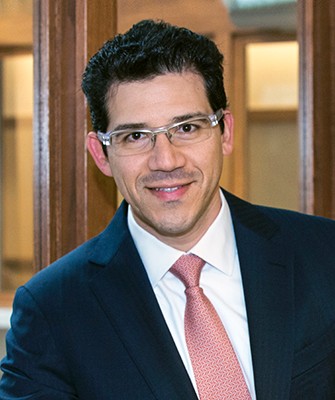New financial technologies that put powerful trading tools in the hands of individual investors may have moved Main Street a little closer to Wall Street during the COVID-19 lockdown period—and boosted the stock market in the process—according to a new study by Carroll School of Management Haub Family Professor of Finance Ronnie Sadka.
During the lockdown period, roughly from late March to early May, investors flocked to the trading app Robinhood and delivered a much-needed infusion of cash, according to Sadka and co-authors Gideon Ozik, of France’s EDHEC Business School, and Siyi Shen, of The Chinese University of Hong Kong, Shenzhen-School of Management and Economics.

Ronnie Sadka
The first week of lockdown in March saw a 14.3 percent increase in the number of Robinhood stockholding accounts, doubling by June 11, according to the findings.
Retail trading reduced the rise in illiquidity, the researchers report. A bottom-to-top decile increase in retail holding in lockdown is associated with about a 19 percent decline in the effective bid/ask spread compared to that in normal time (relative to sample mean). A decline in the effective bid/ask spread signifies an improvement in liquidity, making it easier to trade a stock.
Retailers’ easy access to equity markets may carry some unintended risks: In lockdown, a bottom-to-top decile increase in COVID-19-related media-driven trading by retail investors is associated with about a 17 percent increase in effective bid/ask spread.
“If, for example, retailers excessively trade a given stock, as in the case of stocks with high COVID-19 media coverage during the pandemic, they might turn from providing liquidity to demanding liquidity, and, in turn, decrease the overall liquidity of the stock,” said Sadka.
“We often think of large financial institutions, such as banks and large asset management firms, presenting systemic risk, yet under this new regime of significant retail trading, retailers as a group might present similar risks,” he added. “If they suddenly decide to buy or sell certain assets, they might significantly affect prices and generate a liquidity spiral. While institutional capital flows are at the very least monitored, and are subject to constraints, retail trading is not. Over time, this group of retail traders in aggregate, with direct access to the market, will likely emerge as a significant driver of asset prices. Therefore, while innovations in financial technology are welcome and generally viewed as positive disruptions, we should also beware of some perhaps unintended risks and consequences.”
The hypothesis was that retailer traders are attention driven and their trades are more likely to be motivated for attention-grabbing stocks. “We expect that the attention-driven retail trading is likely to result in worsening liquidity conditions for these stocks,” said Sadka.
“ [It] was the combination of access but also lockdown conditions that caused this. When there are no sports, or other entertainment, people simply play the market.” ”
Sadka said the team looked at the interaction of three variables: the lockdown versus the pre-lockdown period, firms with high versus low retail trading, and firms with high versus low Covid-19 media coverage. “The reason one takes into consideration all these variables is to provide better identification for the mechanism we are trying to establish: That is, it's not just retail investing, not just lockdown, not just media coverage, it's the interaction of all three variables.”
Sadka points out that the analysis isn’t focused on parsing the reasons why retail investors decided increase trading activity, but on the ultimate effect on the market. But Sadka said it could be that trading was one activity in which people realized they could participate.
“A large liquidity crisis was avoided because retail investors had the technology available to get direct access to the market,” said Sadka. “They might be buying Hertz and Delta Airlines, but the point is they are there in the market and their buying and selling provides liquidity. And it was the combination of access but also lockdown conditions that caused this. When there are no sports, or other entertainment, people simply play the market.”
Ed Hayward | University Communications | September 2020




